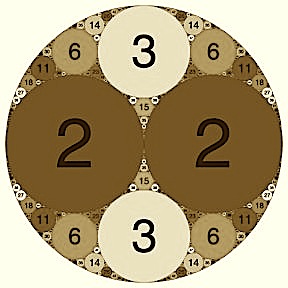Monday, May 29, 2006
Previous Posts
- Take me there
- HGQTMMLACATST... &%$#
- Hong Kong case studies: Part 2
- Game of the day
- Answers to statistics problem
- Playing with colours: Part 1
- Statistics problem
- What is a rainbow?
- Hong Kong case studies: Part 1
- Sure win?
Friends
- Aishwarya from India
- Ancient Clown from Canada
- John from India
- Naomi from Indonesia
- Ribbit from Hong Kong
- Zilko from Indonesia
Science Quiz Top 10
1.
2.
3.
4.
5.
6.
7.
8.
9.
10.
Scores are accumulative.
Advertisements
Why the adverts?
To sustain the running costs of this website, which includes electricity to run my Mac, precious time to think of interesting things to write, and so on.
Please support me and my website just by visiting the advertisements above.
Not that I'm going to make a fortune out of this - probably only a few cents per year!
Statistics
Contact me

7 Comments:
Does the number in the circle represent how many circles of that size can be fitted onto the diameter of the outer most circle?
Nope.
how many times the circumference will fit in to that of the largest circle?
Nope again. This is harder than it seems - look for the obvious!
it's an ordering according to size.
ie. the greater the number the smaller the circle
raw_onion,
nice try, but too vague.
Felix
a bigger circle will have a bigger diameter/ radius, circumference.
so does the number then indicate how many times the diameter of the smaller must be multiplied by to equal the diameter of the origional circle, to which all the rest of the circles fit into.
example, the circle indicated by the digit 2 will have a diameter half the size of the origional circle.
Post a Comment
<< Home